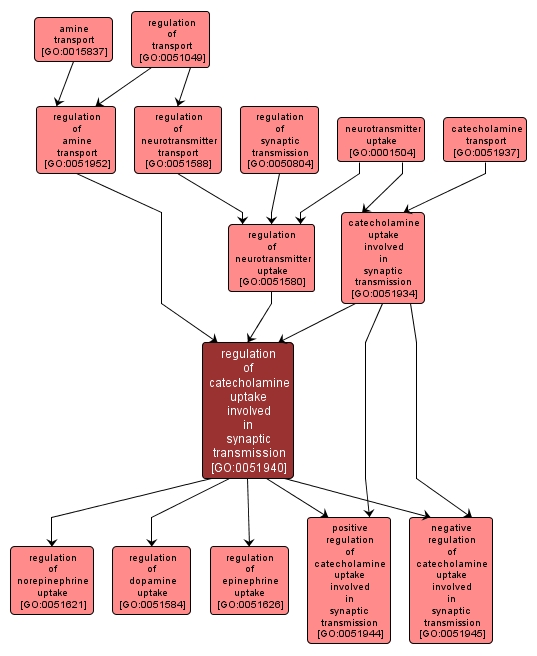GO TERM SUMMARY
|
| Name: |
regulation of catecholamine uptake involved in synaptic transmission |
| Acc: |
GO:0051940 |
| Aspect: |
Biological Process |
| Desc: |
Any process that modulates the frequency, rate or extent of the directed movement of catecholamine neurotransmitters into a neuron or glial cell. |
Synonyms:
- regulation of catacholamine uptake during transmission of nerve impulse
- regulation of catecholamine neurotransmitter uptake
- regulation of catecholamine neurotransmitter reuptake
|
|

|
INTERACTIVE GO GRAPH
|














